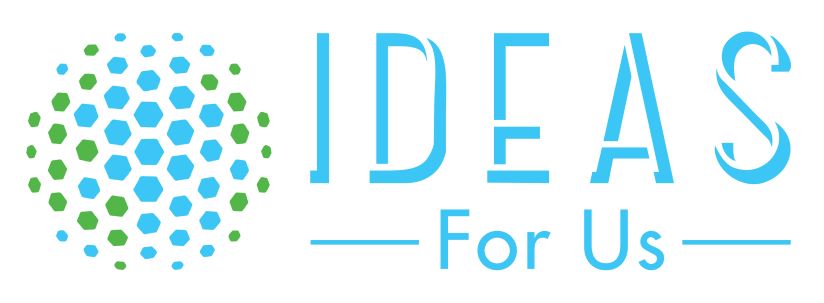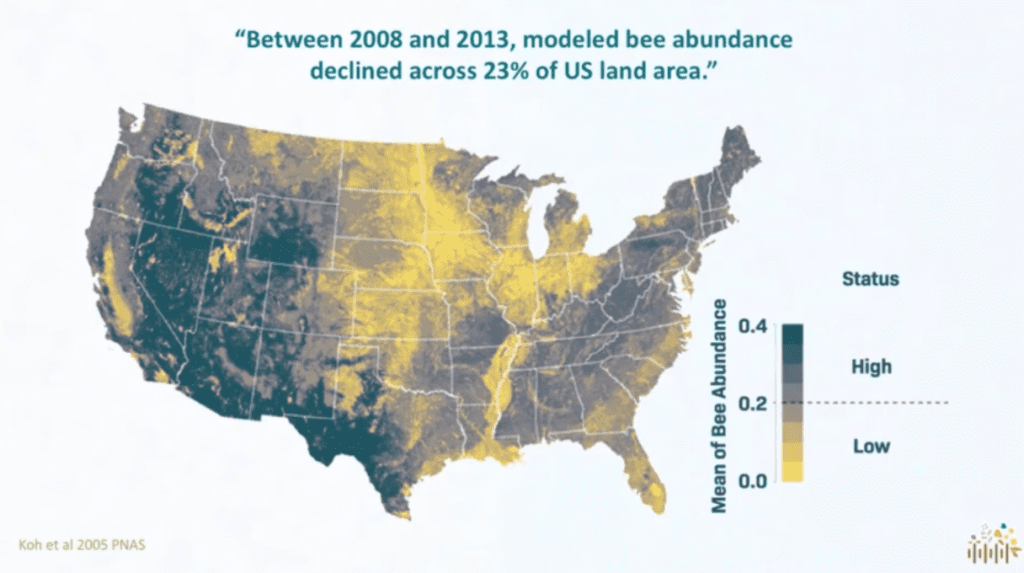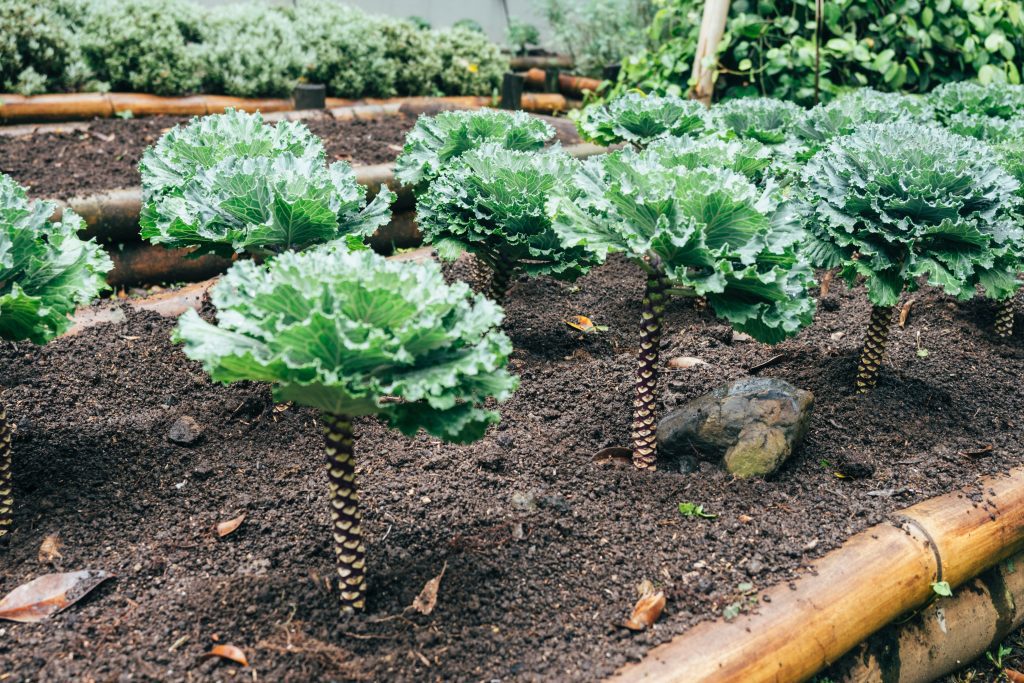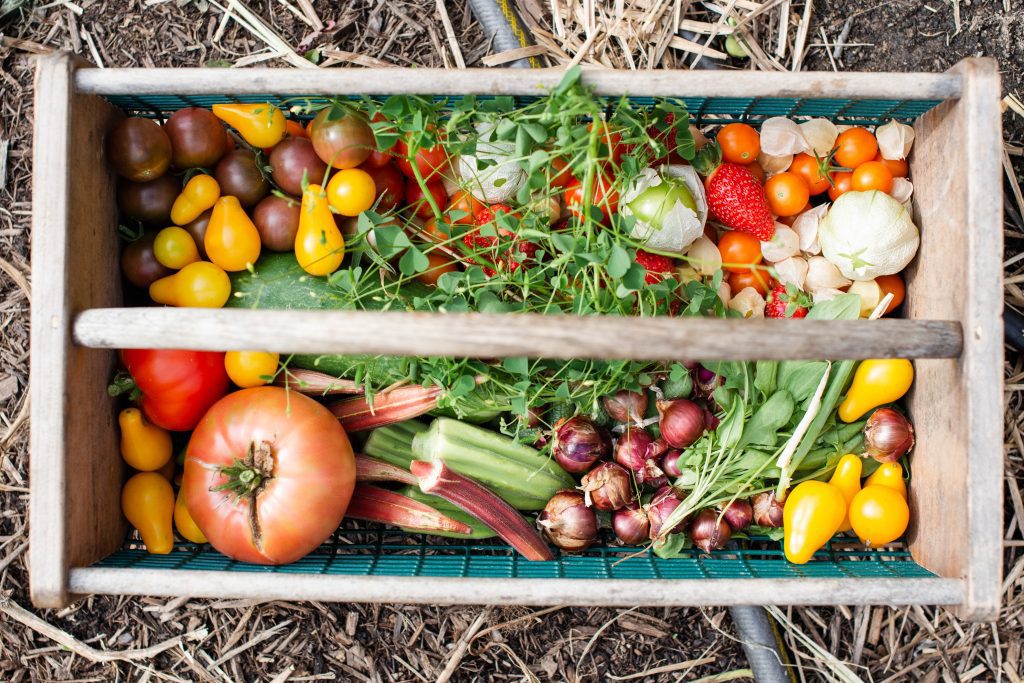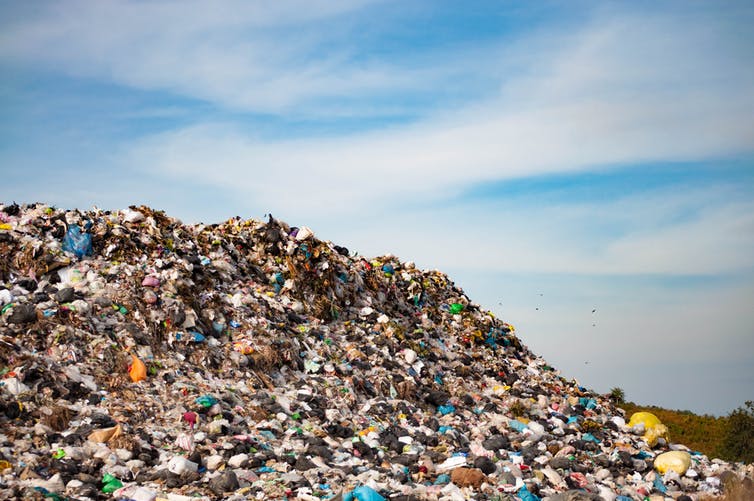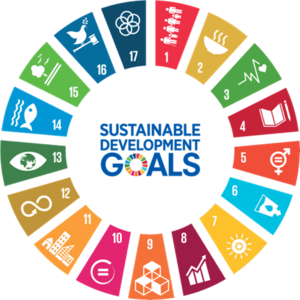Pollinator Garden: Converting Your Turf Grass Lawn
Pollinator garden: converting your turf grass lawn into a pollinator habitat. Look outside of your window. What do you see? Is it a monoculture of turf grass? Did you actively decide to grow it? If not, perhaps imagine another possibility, one you want and one that is not just for you, but wildlife too: paths of Blanket Flower, Purple Coneflower, and Aster with bright colors which attract bees and butterflies.
Nash Turley of the Lawn to Wildflowers Project, joined the April IDEAS For Us Hive discussion on why and how you should convert your lawn into a pollinators paradise. Turley is a Postdoctoral Fellow at University of Central Florida (UCF), and has a background in restoration ecology and biology. Lawns to Wildflowers Project exists to provide people with resources and knowledge on how to convert their lawns into wildlife and pollinator habitats.
Lawn to Wildflowers recently released a mobile app to help people plan their garden plots, find plant and seed resources, and even learn about how to identify native plant communities. You can simply select the region you are in and thanks to data provided by Xerxes Society, it will show you native pollinator plants.
Pollinator Gardening Education
Why convert your lawn into a pollinator or wildlife habitat?
The Project was inspired and motivated by these seven facts about wildflowers and pollinators:
- Over 4,000 Species of Bees
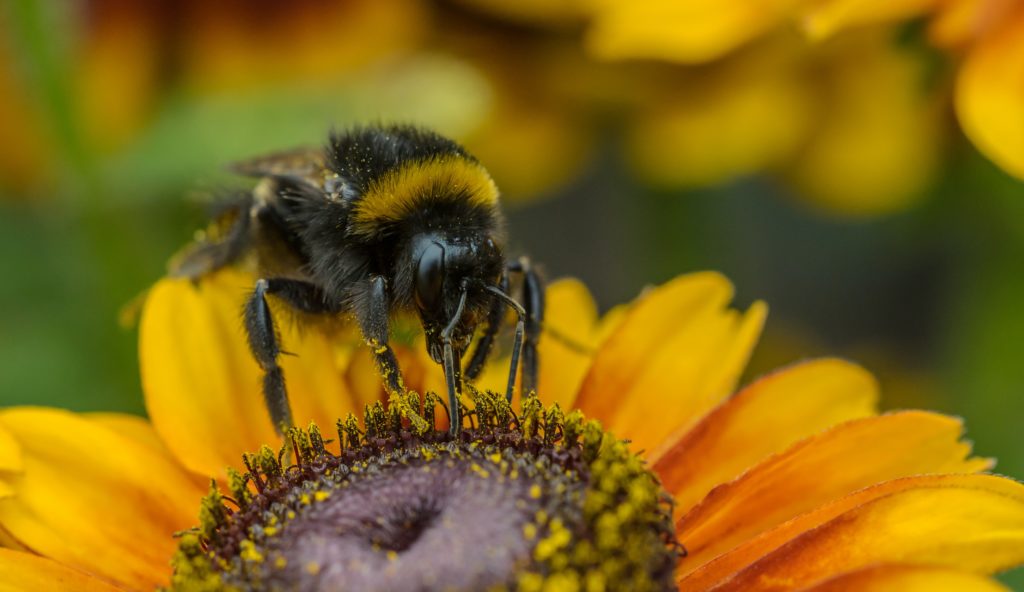
There are around 4,000 species of bees in North America, but there is a gap in public knowledge about them. People like them, but there are a lot more to bees than just the European Honey Bee. Many bee species nest in the ground, are relatively solitaire, and come in a variety of colors. Public education on these species are vital in protecting them.
The public needs to know about the variety of bees in order to best protect them. A 2017 study found there is a decline of native pollinators in the US. 42% of species are secure, and 58% are vulnerable to extinction. But these numbers are based only on 7.3% of all known wild species. 92.7% have not been studied well enough, and it is unclear as to the status of their populations. What we do have is recent data, and it isn’t good. Bee abundance from 2008-2013 declined within the US, from the Mississippi Delta, the Midwest agricultural zones, California, and Florida. The data concluded that 23% of US land area saw a notable decline of bee abundance during this time.
Why are they declining?
- Habitat Loss (the largest contributor) of both nesting sites and pollinating sites, from logging, development, and turf grass development.
- Pesticides
- Climate Change
But what about European Honey Bees and the native bees interactions? Some research suggests when European Honey Bees move into an area, they typically successfully overtake and compete for pollen and nectar, causing wild bee populations to decline. Even when there are many bee species present in an area, European Honey Bees are the most abundant, representing 80-90% of all pollinators present. European Honey Bees are also believed to affect the disease dynamic of native bees, but there is still much research to be done in regards to honey bee and native bee dynamics.
- 35% of Crop Production is Dependent on Pollinators
A lot of staple crops don’t need pollinators, but fruits do! European Honey Bees are shipped to California to pollinate almonds, which is an area where native bees are declining). A study showed that the more bee species present, the more Blueberries. Blueberries rely on wild bees – not European Honey Bees to pollinate them. European Honey Bees can’t properly shake the pollen out of the Blueberry flowers. Native bees can. But beyond that, the study showed that the more species present, the more Blueberries that grew. The Blueberry Bee can visit 50,000 Blueberry flowers, over 6,000 ripe Blueberries, equals $20 (n 1996).
- Water Usage
About 20 trillion gallons of water per year are used to water lawns. Ths is in comparison to 30 trillion gallons of water used on all other crops, while lawn care makes up about 50%-75% of all water usage in the country. The Environmental Protection Agency says “If the average sized lawn in the United States is watered for 20 minutes every day for 7 days, it’s like running the shower constantly for 4 days or taking more than 800 showers. That’s equivalent to the amount of water needed for the average family to take 1 year’s worth of showers.” If you want to watch your water usage, shorter showers are great, but reducing the amount of water for your yard is even better.
- 88% Amount of flowering plants are pollinated by animals
What is the purpose of a flower? Turley points out that they evolved to trick an animal into having sex. The animal will go to collect the pollen, which is the plant sex cell, like sperm, and is rich in protein. They will also collect nectar as well, which keeps them going and is pure sugar. When pollinators collect food, they end up moving from plant to plant, with pollen dropping loose from their bodies. Thus enabling plants to have sex, and to produce offsprng.
- Turf Grass: The Largest Crop
A 2005 study shows that 163,800 km, or 40 million acres of US land is covered with turf grass, making the nation’s largest crop. Turf grass also accounts for habitat loss, requires about 60 million pounds of pesticides, costs around $40 billion to maintain, uses up fossil fuels (for care and transportation), affect water quality, and affect public health. The Florida springs have been greatly affected by fertilizers and pesticides used for lawns and in other parts of the country, the chemicals create dead zones in bodies of water.
- 20,000 Number of Plant Species in North America
The South Eastern US used to be home to a vast habitat of the longleaf pine savanna. Today, only 3% of that habitat is left in good condition, and is home to 900 endemic plants. It was one of the most dominant in the southeast, now endangered. Initially impacted by logging, now fire suppression is an issue, it is one of the most diverse issues in the world. Other habitats of North America include the prairie biome, temperate forest, temperate rainforest, deserts.
- 40% Number of pollinators in the world at risk of extinctions
Pollinators: Not just bees. 40% of all pollinators are at risk of extinction. There are the major groups (European Honey Bees, non native and economically important. But there are also bumblebees, of which are 200 species; all other bees; wasps; flies; beetles, moths and butterflies; and all other insects. Bats are important too, and lizards, birds, and even lemurs are all pollinators.
How To Get Started on Your Pollinator Garden
Pollinator Garden Resources:
- Florida Native Plant Society (Tarflower Chapter in Orange County and Cuplet Fern Chapter in Seminole County)
- Garden Designs: Florida Wildflower Foundation
- Florida Friendly Plant Database: www.floridayard.org
- Book Recommendation: Florida Wildflowers: A Comprehensive Guide
- Local Nurseries: Green Isle Gardens, South Seminole Farm and Nursery, Biosphere
- Native Plant Installation Service: Grounded Solutions by Amanda
How to Create Your Pollinator Garden:
- Find a location in your yard and assess the amount of sunlight/space and soil available.
Ask yourself where is it sandy? Moist? What part gets plenty of sun, and the other shady? Think about plants that will flower all year round, not just in Spring or Summer, to create a pollinator pathway throughout the whole year. Take these notes, or even samples of soil from your yard, to your local nurseries and ask which native plants will do best.
2) Scout the biodiversity of your yard. Try to see which animals are already thriving.
3) Find fun accessories to addlike a birdbath, bird feeder, and bat house (encourage life – good and bad bird seed)
- Remove the grass either by suffocating the grass or removing it. You can even take bags of soil, and lay it out in shape of your garden. Here are three easy and cheap ways to remove sod:
- Sod removal. This is quick, but hard work. Simply grab some shovels and dig it out.
- Cardboard method. Lay cardboard out and layer four or five layers. It will kill grass, but will take several months.
- Sheet mulching. Get cardboard and lay out at least three layers, so plants can’t squeeze and grow through. Get any type of mulch: chopped up leaf chips, pine straw; and put over the cardboard and leave a few months, maybe leave for winter season. Leave for two or three months, and plant right into that.
- Learn about your intended plants soil needs.
If you have that typical sugary-soft sandy Florida soil, native plants are ready for it. If you decide to go native – which you don’t have to – the native plants have evolved to handle that sandy soil. But even so, anything you plant, no matter what type of soil, baby it for a while. Be prepared for some unexpected occurrences, for some plants too flourish and others to die.
- Plant your garden! Make sure to water it in well.
Maybe use organic fertilizers (mushrooms), but be prepared for some plants to flourish, while others may die. Turely goes by the motto of right plant, right place. He urges to just get things out there. He says to get a large variety of species, and begin planting.
Concerns About Starting Your Pollinator Garden
Lawn to Wildflowers conducted an online survey to understand the factors preventing people from converting a portion of their lawn to wildflowers. Over a quarter (27%) said they wouldn’t because of not knowing what to do, while another 27.9% said maintenance time played a factor. But there were other, persistent factors, too: the possibility of HOA infractions, what neighbors may think, and potential wildlife issues.
Let’s say you are ready to go. But your house is in a neighborhood with HOA. How can you possibly get over the potential obstacles and issues that HOA may have? Turley says that at a Plant Society Conference, it was shared that HOA isn’t a problem until your neighbor complains. So to curb that, be communicative with your neighbor. Let them know why you are doing it, and maybe even rally them to join you.
You can also go with different options. You don’t have to convert the entire yard into a pollinator garden, maybe do it piece by piece, in as manicured a way as possible. Consider using some type of border, or mulch.
Take a board seat on the HOA and encourage neighbors to see the beauty in native landscaping. If you go to your HOA and neighbors before planting anything in the ground with statistics as to why turf gaps lawns are bad for water, and for native animals, then they may be more likely to back.
If nothing else, there is a state level bill, called the Water Rights Bill, that is meant to protect people who want to convert their lawns to Florida Friendly landscaping. That bill doesn’t mean native flowers, but it protects people who want to use plants in their yards that require less water.
If all goes well, or if you have no HOA to work with, you’ll soon be planning away your turf lawn to one that pollinators and wildlife will enjoy and frequent.
- Feature image: Marcelo Sorondo
- Woman gardening image: Sheryl Seyer
- Bee and yellow flower image: Dominik Scythe
- People planting image: NeONBRAND
- Wildflower image: Jade Seok
- Home and lawn image: Evan Dvorkin
- All other images via Hive Discussion
